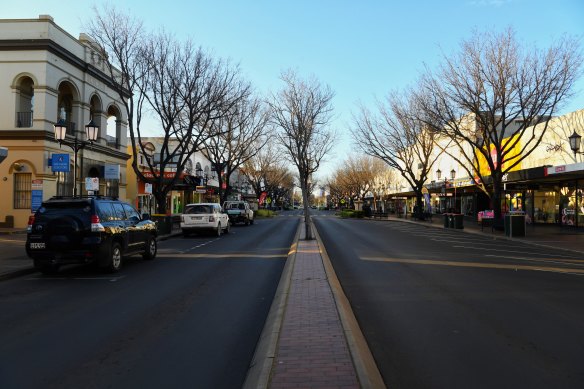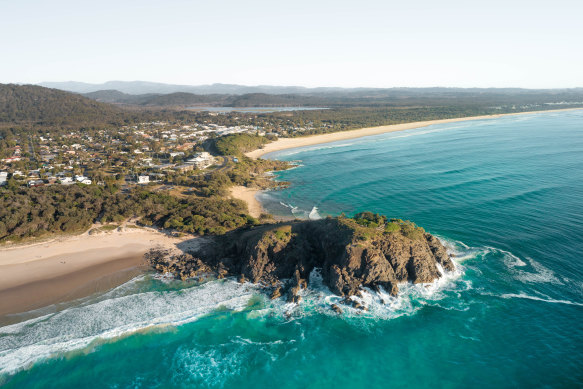Calls to build more one-bedroom apartments … in Dubbo?

Key points
- More homes need to be built to accommodate regional populations that exploded in the past two years, a panel heard.
- Different types of homes need to be built as well to provide residents options for various stages of their life.
Property listings
Experts and locals have called for more homes to be built in regional Australia to improve the cost of housing since it went through the roof during the pandemic-era property boom.
Country and coastal towns with an acute shortage of housing also need different types of homes to be built, rather than just house and land packages on their fringes, to provide options to residents and help bring down the price of housing, a panel has heard at the Regional Australia Institute’s national summit in Canberra on Wednesday.
A quiet Macquarie Street in the centre of Dubbo, where the sales and rental market struggled to cope with the influx of newcomers.Credit:Kate Geraghty
Regional towns need to build smaller homes, granny flats and medium-to-high density units to accommodate residents at different stages of their life, the panel heard.
House price growth in many regional council areas has outpaced capital cities. Regional NSW’s median house price jumped 43.7 per cent since the pandemic hit Australian shores, on Domain data, pricing out locals and even displacing them in some instances. Similar scenarios have played out in regional Victoria, Tasmania and elsewhere.
Dubbo mayor Mathew Dickerson said increasing the number of homes being built in towns like his would help drive prices down.
“Part of the solution that I’ve been trying to push is to get more housing because it’s a supply and demand scenario,” Dickerson said. “It means prices are going up at unsustainable levels. If we can just get more housing that starts to address that supply and demand, maybe we start to get house prices settling down to a certain extent.”
Coastal hotspots like Byron Bay and surrounds have an ongoing housing crisis.Credit:iStock
He said while the pandemic was good for regional areas, many were caught off guard by the influx of people.
“People discovering that you could actually live in a different area to where you worked, it was actually really good for regional populations. [But] many councils, including our council, got caught with our pants down because we hadn’t planned on a pandemic coming along – and I’m not sure many organisations, or businesses, or councils did – but suddenly, we had all this influx [of people].”
Dickerson said Dubbo council had borrowed more money than usual to accelerate development in the town to be prepared for future growth and held forums to exchange ideas with developers to understand Dubbo’s needs and potential for investment.
“There are some organisations out there that don’t realise the potential in regional Australia with so much demand at the moment, they’re in their own little bubble maybe in a Canberra or a Sydney, and they don’t realise the opportunities out there across regional areas,” Dickerson said.
Dubbo has three development-approved high-rise unit blocks in the works – two of which are almost sold out off the plan, an indication there was demand as well as a “change in attitude”, Dickerson said.
Regional Australia Institute chief economist Dr Kim Houghton said more councils have to plan to build more homes to accommodate the increased population now and into the future.
“We need to bring that kind of thinking back into our planning because, if we’re going to have our local communities driving and in charge of how this growth happens, then they need to be the ones thinking of that well ahead of when that happens for next time,” Houghton said.
The institute conducted a study that found many regional towns had an undersupply of one- and two-bedroom units. The demand came from downsizers and young professionals, Dr Houghton said.
“The market is not building this stuff because the market doesn’t realise the demand is there,” he said. “It’s not just about house and lot packages on the fringe. It’s actually about a little bit of infill, a bit of medium density, it’s a bit of one- to two-bedroom units.
“We know there is a lot of community resistance to that until those resisting realise there is nowhere for their parents to downsize to: then you might get a bit of change in that community response.
“People are drifting inland because that’s where that affordability lure is taking them, but that can’t keep going on forever.”
Most Viewed in Property
Source: Read Full Article

